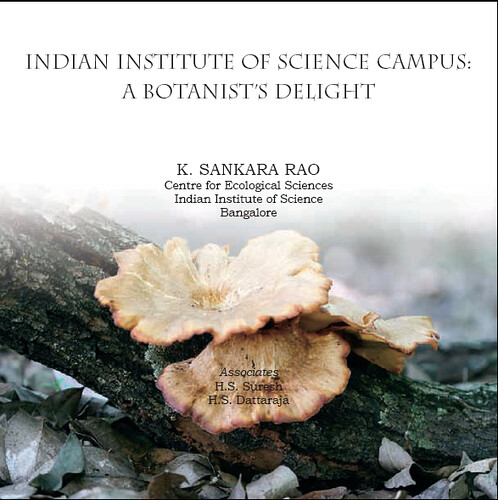The Research track at the PanIIT Global Conference featured a session on IIT Research: Inputs and Outputs. My colleague and friend Prof. Jayant Haritsa was one of the panelists in this session; the slides for his talk are here.
One of his points, which should be familiar to readers of this blog, is about how our top institutions need to do more -- much, much more -- to set people up for success. Since there's a lot in his talk that I agree with, I'm producing his extended abstract below. Treat this as a guest post by Jayant.
* * *
Rethinking the Research Crisis @IITs
Jayant Haritsa
Indian Institute of Science
The following opinions are based on my experience of 8 years as a graduate student and researcher in the US, followed by over 15 years as a computer-science faculty at the Indian Institute of Science, Bangalore.
The issue raised by the panel is how to improve the quality of the faculty and students that enter premier scientific institutions in India and how to improve the productivity and impact of their research. Certainly there are a variety of national stumbling blocks that do negatively impact the attractiveness of the IITs as scientific destinations, and these factors have been enumerated by the moderators. However, I would like to make the case that this is really the proverbial tip of the iceberg, and the more germane and urgent question to be asking is "How do the talented students and faculty that do join the IITs fare?". My point is - had most of these folks turned out to be success stories, then we would have seen a "domino effect" that would have automatically generated a rich stream of similar applicants - in fact, we wouldn't be having this panel discussion in the first place! In a nutshell, "institutional mechanisms must be consciously set up to mentor star faculty and students for visible success".
Unfortunately, the typical experience is otherwise. Specifically, we have had several cases of faculty with top-notch academic pedigrees who after returning to India have largely disappeared from the international research arena. For example, it would not be stretching the realms of credulity for a faculty to have produced more PhDs and publications in a few years as a junior faculty in a top US school as compared to a couple of decades spent at our institutions!
Similarly, we have also had several instances of our own best master's students who have subsequently gone on to join our Phd programs failing to either produce a thesis commensurate with their talents, or sometimes even to complete the program. In a recent instance, a star in-house student "timed-out" after spending no less than ten years in the PhD program!
The above anecdotal information serves only to highlight my point that stemming the perceived rot first requires introspection about the internal mechanisms of our institutions, before we start agonizing over the external interfaces. Specifically, what causes even highly talented individuals to unceremoniously fade away without giving full expression to their abilities?
My analysis is that the following reasons are primarily to blame for this unhappy state of affairs:
Firstly, the poor level of academic professionalism and administration. A typical situation faced by applicants is the wall of indifference with no response, either positive or otherwise, forthcoming to their applications for extended periods of time. Subsequently, their offices and accomodation are rarely set up adequately by the time they enter the academic portals. Then, during the initial years, they rarely get to meet with top administration officials and are often left to fend for themselves in figuring out the system. Overall, an atmosphere of benign indifference, often bordering on neglect, characterizes our treatment of new recruits.
Secondly, a particularly thorny issue that often plagues new researchers, while they still retain their idealism, is the institutional pressure to carry out "locally relevant" research, which is also highlighted in the panel agenda. While on the surface this would seem an unarguable objective, yet in practice it usually turns out to be the case that it merely provides a "holier-than-thou" fig leaf to justify poor quality research and third-rate publications. I would suggest that it would instead be far better for us to first attempt to keep our heads above water in international research, and if it coincidentally happens that the work is also of local relevance, so much the better. That is, the local relevance should be the icing on the cake, and not a moralistic justification for a moldy cake. Our first duty is to put India on a high pedestal in world research.
Further, the lip-service paid to locally relevant research is evident from the fact that most institutions talk only about the research objectives without using the same yardstick for the students or faculty performing the research. If one wants to be truly relevant to local society, there is a much simpler and immediate option - welcome the reserved category students and faculty with open arms, instead of the arms-length approach currently in vogue! That is, start with "locally relevant researchers" before we wax eloquent on the merits of locally relevant research.
Thirdly, the unwillingness to call a spade a spade when it comes to professional judgements of one's colleagues or their students. For fear of vitiating the collegial department atmosphere, we make the grave mistake of providing sugar-coated assessments and, in the long run, encourage researchers to fall prey to a false sense of accomplishment. Instead, we should clearly enunciate the performance metrics at the time of joining and, most importantly, stick with these metrics in the judgement process. At IISc now, quite a few departments, especially in the Electrical Sciences division, have authored documents outlining their expectations and modes of evaluation for both faculty and students. As a simple case in point, a recently implemented policy in the Computer Science department is that ME students can be considered for an S (outstanding) grade in their project work only if they have submitted a paper to a journal or conference that is internationally recognized to be of A+ or A calibre. While earlier about 60% of the students used to routinely obtain an S grade in the project, beginning last year, we have not only had the percentage come down steeply to around 20%, but more importantly, the departmental publications have shot up significantly. Further, grades are not only used as carrots but also as sticks. Last year, for the first time, a non-neglible number of students were forced to stay behind without graduating until they satisfied a baseline quality requirement. The basic point here is that once we enforce accountability criteria for both faculty and students, the genius of the Indian mind is such that it will automatically deliver!
In closing, I would like to reiterate my main point - echoing Cassius' injunction to Brutus, "the fault lies not in our stars but in ourselves", I would say "the fault lies not in our inputs but in how our systems utilize these inputs".


